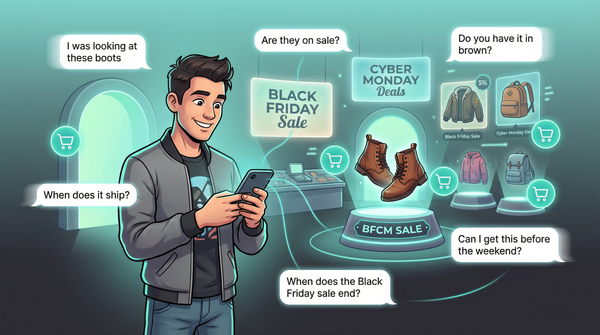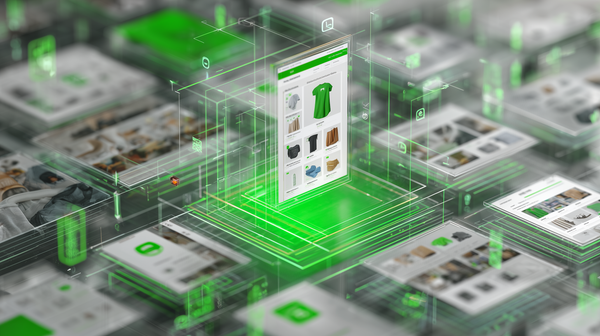Holiday 2025 E-Commerce Outlook: Slower Growth, Higher Stakes for DTC Brands

As we gear up for Holiday 2025, direct-to-consumer (DTC) brands face a pivotal moment. The pandemic-era e-commerce boom has waned, and growth is slowing dramatically. Online holiday sales are expected to climb by just 5.3% this year, a steep drop from last year's 8.7% increase (Reuters).
For mid-sized DTCs, particularly those on Shopify, this makes Q4 a crucial battleground. With consumers tightening their belts amid persistent inflation, the brands that swiftly combine value with operational efficiency will weather the storm.
Slower Growth on a Challenging Terrain
The macroeconomic picture is clear: holiday sales growth is decelerating. Deloitte forecasts a mere 2.9%–3.4% rise in U.S. retail sales, marking the slowest holiday increase since the pandemic (Reuters). Adobe predicts online holiday spending will reach $253.4 billion, up slightly by 5.3% year-over-year (Reuters). Salesforce is even more conservative, forecasting a 2.1% increase in U.S. online sales (Reuters).
What's behind this slowdown? Economic pressure. Persistent inflation, higher living costs, and tariff-induced price hikes are sidelining shoppers (Reuters). Add to this a holiday calendar that's six days shorter between Black Friday and Christmas (Modern Retail), and the pressure mounts.

Retail giants are responding with caution. Walmart and Macy’s are seeing gains as budget-conscious consumers trade down, while Target and Best Buy are tempering expectations (Reuters). The overarching theme? Prudence prevails.
The Value-Driven Shopper: A New Holiday Mindset
Value is king this holiday season. PwC projects a 5% decrease in average American spending, the first decline since 2020 (SGB Media). Shoppers are zeroing in on essentials, seeking discounts, and cutting discretionary buys (Reuters). Expect average discounts of 25–30% during Cyber Week as brands vie for deal-hunters (Reuters).
Shoppers are going to great lengths for value:
- BNPL usage is surging, up by $2 billion this season (Reuters).
- Mobile commerce now accounts for over half of online holiday purchases (Reuters).
- Early shopping is the new norm: Amazon’s Prime Big Deal Days are expected to rake in $9 billion, a 6.2% year-over-year increase (Reuters).
As DTC ad strategist Andrew Foxwell observes in a recent X post (Source, X)
"The seasonal swings get bigger every year on Meta, for better or worse. October last year was bad, this year thus far it’s worse. Consumers are holding $ because they know deals are coming. It’s not you."
The seasonal swings get bigger every year on Meta, for better or worse. October last year was bad, this year thus far it’s worse. Consumers are holding $ because they know deals are coming. It’s not you.
— Andrew Foxwell 🦊 (@andrewfoxwell) October 7, 2025
Operators like Kathrin Hamm, founder of Bearaby, notice a shift toward lower-priced items, such as $49 eye masks over flagship products (Modern Retail). While shoppers still indulge in electronics and sporting goods when deals are irresistible (Reuters), the challenge lies in staying relevant without racing to the bottom.
Q4 Survival Playbook: DTC Strategic Shifts
For DTC brands, Q4 is critical, and this year, it’s existential. Many generate the majority of their annual revenue during these weeks (Modern Retail). Miss targets, and 2026 starts on a rough note.
Here's how savvy DTC operators are adapting in a value-driven, promo-heavy landscape:
Start Early, Stay Agile
Gone are the days of betting everything on Black Friday. Brands are spreading the holiday season over more weeks, launching deals early and pacing them through December. “The holiday sales have started early…spanning a holiday quarter now rather than the holiday month of old,” says Katya Constantine, CEO of DigiShop Media (Digiday). This smooths demand, eases fulfillment chaos, and provides room to recalibrate if a campaign falters.
Purposeful Discounts, Not Panic
While discounts are expected, strategic promotions are key. Over-discounting can harm brand equity and condition customers to wait for markdowns (Digiday). Bearaby, for example, avoids Black Friday discounts, focusing instead on limited-edition products to add perceived value without slashing prices (Modern Retail). The takeaway: reward your loyal customers, clear excess stock, but avoid deep discounts across the board.
Drawing from DTC expert Nick Shackelford's Q4 Revenue Architecture framework (shared on X), brands should prioritize "bundle strategies: AOV optimization, better margin preservation" over "deep discounts (40%+)" and lock in offers as early as Q2—"October pivots are essentially capitulation."
Q4 Revenue Architecture (A Strategic Framework):
— Nick Shackelford 🦾 (@iamshackelford) October 8, 2025
Most brands fixate on calendar logistics (Amazon Early Access, traditional BFCM, extended December promotions). This is tactical thinking.
Strategic operators ask:
→ What's our primary KPI? Top-line growth, contribution margin,… pic.twitter.com/dGvS2kbbfd
Elevate Customer Experience—Human, Not Robotic
In an offer-saturated market, customer experience becomes a key differentiator. This means fast fulfillment, transparent shipping, and return policies, with no surprises at checkout (especially on mobile, where most traffic occurs (Reuters)). It also requires real-time support, such as live chat or personalized recommendations.
This is where LiveRecover shines. By integrating with Shopify, LiveRecover deploys human agents to recover abandoned carts via SMS. When a shopper balks, a trained agent reaches out, addresses concerns, and helps finalize the sale—often in real time. The result? Brands report higher recovery rates compared to automated flows because customers feel genuinely engaged, not spammed by a bot. LiveRecover is a prime example of blending human interaction with technology to maintain trust and boost revenue.
Optimize Marketing Channels for ROI
As budgets tighten, brands are shifting away from broad Facebook/IG ad blitzes toward high-ROI, owned channels. This includes enhancing email and SMS strategies with segmentation and personalization, strengthening affiliate and creator partnerships, and even experimenting with direct mail. As one DTC founder noted,
“Until we figure out our paid media strategy… we just don’t see a point in competing with the massive brands” (Modern Retail).
eCom investor Jordan West boils it down to three Q4 essentials (Source X):
3 things every brand needs to know for q4
— Jordan West (@jordantwestecom) October 6, 2025
1. TikTok shop content + sales at scale will win as primary TOF
2. Flex ads on ASC on meta is the most scalable campaign type
3. Brands who understand and measure halo will win (and double down on that TOF)
What did I miss? 🤷♂️
The goal: maximize every dollar and ensure you're not just feeding algorithms.
Run Lean and Plan Conservatively
With an uncertain demand curve and a shorter selling window, inventory planning is complex. Smart operators are doubling down on proven SKUs, limiting new product launches, and negotiating flexible terms with suppliers and 3PLs (Modern Retail). Shipping contingency plans are crucial—use multiple carriers, set clear cutoff dates, and communicate expectations to avoid last-minute chaos.
The Outlook: Cautious Optimism
Let’s face it: Holiday 2025 will test DTC brands like never before. E-commerce isn't dead, but the easy wins are history. Yet, for those willing to adapt, there's still opportunity. Brands that meet customers where they are—offering genuine value, exceptional service, and a human touch—can emerge victorious.
The silver lining of these challenging conditions is the sharpening of operational strategy. By focusing on sustainable marketing and solid unit economics, brands position themselves to thrive when growth rebounds. The sentiment in the Shopify DTC community is one of cautious determination: those who weather this cycle will emerge stronger.
Holiday 2025 may bring slower growth and higher stakes, but with the right strategies and mindset, DTC brands can still win.
Subscribe for weekly DTC insights.





